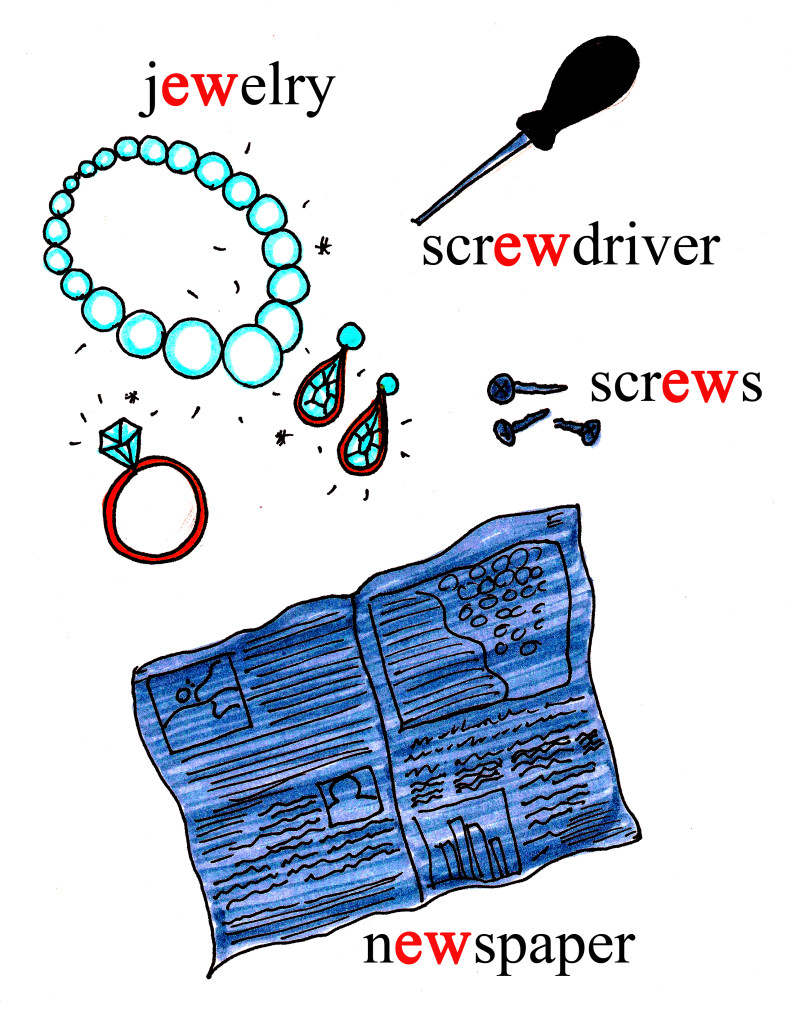Vowels and Consonants
What are vowels?
Vowels rule English and learning them cannot be avoided
Vowels are a, e, i, o, u, sometimes y as in sky, and sometimes w as in few (double u=w=uu), as in few=feuu.
Both vowels and consonants are inconsistent but vowels are much more inconsistent; each vowel has, at least, 5 sounds and 12 spelling patterns. Every vowel has a short sound, a long sound, and a number of other sounds.

The symbols of long vowels are ā, ē, ī, ō, and ū. The symbols of short vowels are ă, ĕ, ĭ, ŏ, ŭ.
A long vowel sounds like its letter name. As in fāte, the long ā sounds just like the name of the letter A.
A short vowel is unique sound of a vowel, as in the unique short ă sound in făt.
Vowels are the strong letters because they are filled with sounds; they are responsible for the sounds we make in our speech. Vowels are so strong; they often help each other in spite of having a consonant between them, as in fāte.
Focus your vision on the vowels when you read, because they are the important letters.
Focus your vision on the vowels when you read, because they are the important letters.
Each vowel has several sounds we call phonics, which are spelled in many different ways we call spelling patterns:
♦ The vowel A has 5 major sounds, which are spelled in 12 spelling patterns.
♦ The vowel E has 7 major sounds, which are spelled in 17 spelling patterns.
♦ The vowel I has 8 major sounds, which are spelled in 19 spelling patterns.
♦ The vowel O has 12 major sounds, which are spelled in 20 spelling patterns.
♦ The vowel U has 6 major sounds, which are spelled in 28 spelling patterns.
The First Two Rules of Vowels
1- The first rule of vowels: When two vowels are walking, the first one does the talking, as in rain, meat, tie, coat, and argue.
2- The second rule of vowels: Two vowels can still walk when there is only one consonant between them, as in fate, Pete, site, hope, and mute. One consonant between two vowels is too weak to keep the vowels from helping each other, and this is the reason consonants double so much, as in sitting, dressed, controlled, hopped, and grabbed.
Consonants are the rest of the 26 English letters, which are b, c, d, f, g, h, j, k, l, m, n, p, q, r, s, t, v, w, x, y, and z. Certain vowels occasionally sound and act like consonants, like the o in choir and the u in language.
What are consonants?
The eight consonants c, g, h, q, s, x, w, and y are inconsistent because they make over 50 sounds we call phonics, which are spelled in 60 major ways we call spelling patterns. For instance, the consonant s sounds like its letter name in soap but like a z in rose, has, and bags.
The Difference between Vowels and Consonants
Consonants are soundless unless they are paired with a vowel. Consonants are the weak letters and this is the reason for doubling consonants. For instance, the final s often doubles as in progress because one s is so weak; a single final s often doubles to keep itself from turning into a z, as in is has, was, has, was, etc.
In addition, one consonant between two vowels is too weak, we need two consonants to keep vowels (the strong letters) from helping each other; compare hŏpped with hōped.

9 Responses
Alamdulilah ,this is great .
Thanks it really help.
Could you please add more specific examples of words with long vowel sounds without an “e“, such as data or Utah please? Thank you!
To learn more, buy the books.
This makes me realize how hard it is for others to learn our language. WOW! Who came up with this system.
This is very helpful. Thank you
Thank you for giving back.
You make learning and understanding so easy…thank you so much
Thank you Janet. Glad I could help.
Camilia
Great blog.